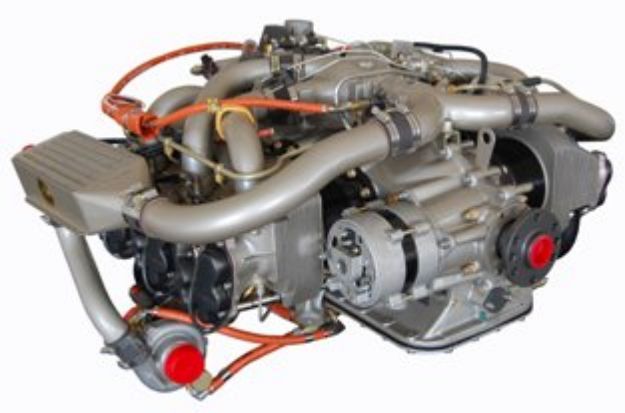The FAA has announced it will be issuing a final Airworthiness Directive (AD) Thursday (Feb. 23) on potentially improperly installed crankshaft components of certain Continental Aerospace Technology engines. The AD, which the FAA said will become effective immediately upon issue, is a follow-on to a Continental-issued mandatory service bulletin (SB) issued last week, but with stricter inspection requirements.
The FAA said the AD will apply to approximately 1,632 Continental GTSIO-520, IO-360, IO-470, IO-520, IO-550, LTSIO-360, LTSIO-520, O-470, TSIO-360, TSIO-520, TSIO-550, TSIOF-550, and TSIOL-550 model engines manufactured between June 1, 2021, and Feb. 7, 2023. “Owners must inspect these engines before further flight to verify that the crankshaft counterweight retention ring is properly installed and take corrective actions if necessary,” according to the FAA announcement.
The issue involves possibly improperly installed snap rings that hold pins in place to support crankshaft counterbalance weights. Continental said improperly installed snap rings may not have seated fully in the groove designed to retain them. Continental said the problem is one of assembly and not the integrity of the snap rings themselves.
Earlier this month, Cirrus announced it was grounding its company fleet of SR22s and SR22Ts with engines manufactured during the specified time period out of an “abundance of caution.” For its part, Continental informed customers in early February it was “proactively making the decision to encourage all flights powered by a Continental 360, 470, 520, 550 engine manufactured between June 1, 2021 through February 7, 2023, to pause flight until further information is available.”




































They have been building counterweighted engines since the 1950’s and suddenly have “Forgotten “ how to properly install a snap ring?
Continental should send EVERY owner of one of these affected engines at their cost rather than issue a bulletin (now AD) requiring cylinders to be removed to verify the factory’s quality control (or lack of it)
I think Continental supports the costs of the procedure. The problem resides in the number of engines afected and the a availability of mechanicals to do that. It will cost, I think, months to solve that problem.
How does this happen? Was a new person assigned to place snap rings, who did not know how to do it properly? Was the snap ring plier worn out? Were a lot of the crankshaft receiving grooves not machined properly? Was this employee sabotage?
Continental has been building these engines for umpteen years. Where is the Root Cause Analysis of what happened to this lot? The single point of failure has been known about since a Battle was lost due to the lack of a Horse Shoe Nail.
“Congrats on your new airplane purchase. Now you get to have a field mechanic somewhere yank the cylinders off your engine and reinstall them. Good luck.”
Yep
It must have been one employee or one work station as not all serial numbers of engines made or remanufactured during the calendar period apply. I am looking at a factory new IO-550B on the front of a Bonanza that was manufactured in January 2022 and the SB doesn’t apply based on engine s/n. Meanwhile we have a factory new TSIO-520 deliverd from the Continental two weeks ago still in the crate that the SB does apply to that one. I advised the owner to send it right back in the crate. Who would tolerated tearing cylinders off a factory new engine with zero hours in the crate in the field while potentially affecting cylinder stud pre-load. For close to $100K to get a brand new engine delivered on the very date where the problem hits the press is just not acceptable. Surely Continental knew that serial number applied before they shipped it the week before as at that point they were well into writing the SB and designing the inspection tool. Or there is a big devide between engineering/fleet support and sales. Which is a problem in itself.
Less expensive to accomplish locally what Continental will do upon return and then ship back to you.
Completely agree.
But now the liability is shared with the field mechanic. The engine is brand new. As an A/P my advice would be to send the engine back and demand a new one. The value of that engine takes an instant hit for resale purposes if it was opened up and inspected IMO.
Yes! send the customers a new engine. Total BS from Continental.
Agree if it’s still in the crate ship it and have Continental deal with it, downside is the plane will be grounded even longer.
Time for the FAA to force Continental into an SMS program 🙃
SMS, yep that will solve everything. Just what the FAA wants to do, admit their original equipment manufacturer monitoring is not working (just like the Boeing manufacturing issue).
Continental should absolutely repair these engines and not charge owners for parts or labor.
With respect, Continental should replace these engines with either new or reman(equivalent to what is being recalled). Let Continental then fix them at the factory at their expense.
I know you won’t believe this story but it is true. Lycoming replaced FIVE AEIO540D4A5s on my Pitts in a 156 HRS. The first engine made metal and they replaced the entire inverted system and Hartzell Claw Prop, No Questions asked. Lycoming also paid for all labor and shipping.